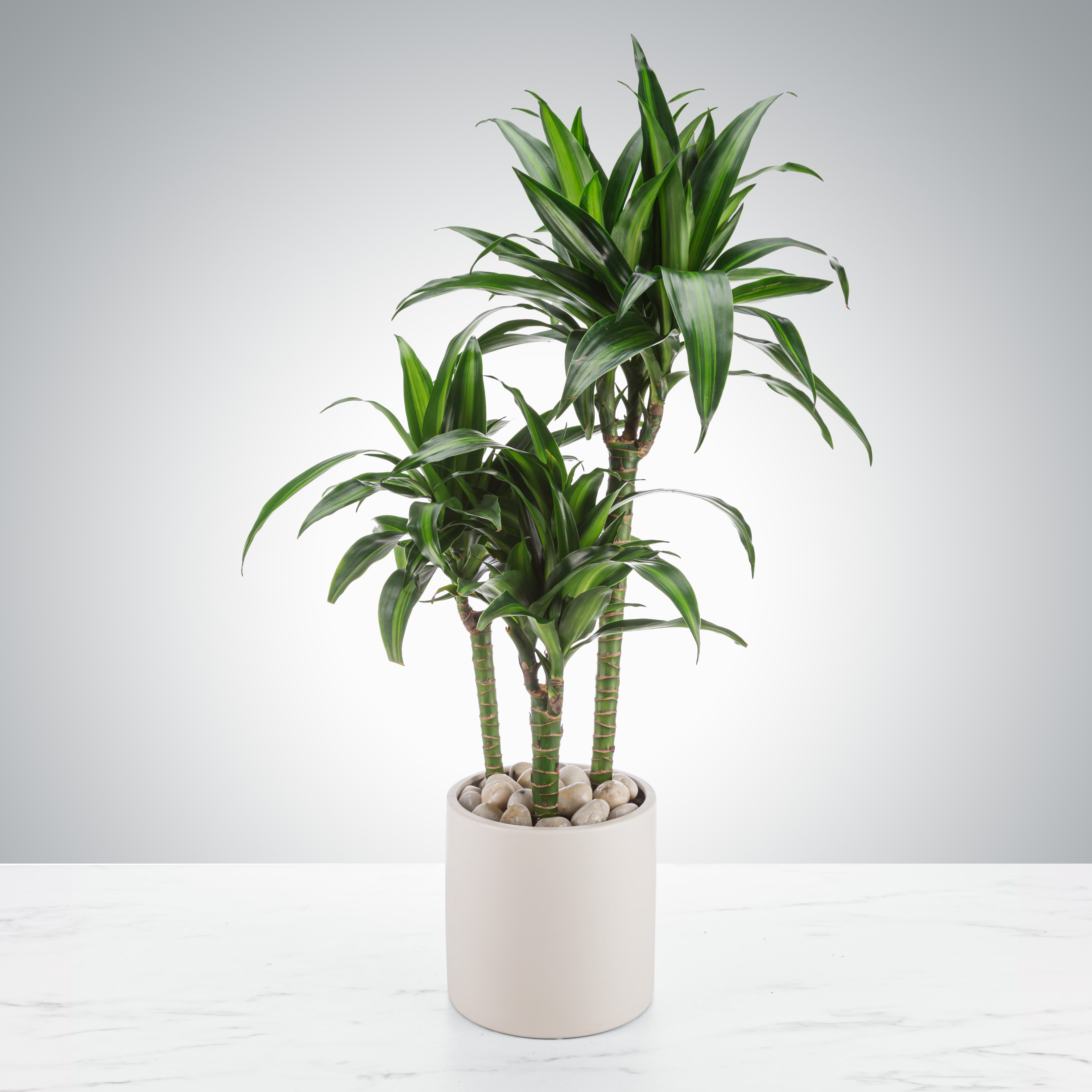The Dracaena: A Versatile and Elegant Houseplant
The Dracaena, a genus of about 120 species of trees and succulent shrubs, is a popular choice for both home and office environments. These elegant plants are known for their striking appearance, easy care, and air-purifying qualities, making them a valuable addition to any indoor space.
This article will delve into the fascinating world of Dracaenas, exploring their diverse varieties, care requirements, and the benefits they offer to both humans and the environment.
A Diverse Genus with Unique Characteristics

Dracaenas exhibit a remarkable range of forms, from the towering Dragon Tree (Dracaena draco) with its dramatic, umbrella-shaped canopy to the compact and vibrant Dracaena marginata with its slender, variegated leaves. Some of the most common and beloved Dracaena species include:
Dracaena marginata: Often referred to as the Madagascar Dragon Tree, this species is prized for its slender, arching stems adorned with long, narrow leaves that often feature red or purple margins.
These are just a few examples of the diverse range of Dracaena species available. Each possesses unique characteristics that contribute to their visual appeal and make them suitable for various indoor settings.
Caring for Your Dracaena: Essential Tips

Dracaenas are relatively low-maintenance plants, making them ideal for busy individuals or those new to indoor gardening. However, providing them with the right conditions will ensure their optimal growth and health.
Light: Most Dracaenas thrive in bright, indirect light. Avoid placing them in direct sunlight, as this can scorch their leaves.
Frequency: Water your Dracaena thoroughly when the top inch of soil feels dry to the touch.
Temperature: Dracaenas prefer warm temperatures between 65°F and 75°F (18°C and 24°C).
Frequency: Fertilize your Dracaena during the growing season (spring and summer) with a balanced liquid fertilizer diluted to half strength.
Purpose: Pruning can help to maintain the shape and size of your Dracaena and encourage bushier growth.
Frequency: Repot your Dracaena every two to three years in the spring, using a well-draining potting mix.
The Benefits of Owning a Dracaena
Beyond their aesthetic appeal, Dracaenas offer several valuable benefits:
NASA Clean Air Study: Dracaenas are included in NASA’s Clean Air Study, which identified them as effective air-purifying plants.
Improved Mood: Studies have shown that the presence of plants can reduce stress levels and improve mood.
Versatility: Dracaenas come in a variety of shapes, sizes, and colors, making them suitable for various interior design styles.
Potential Problems and Solutions
While generally easy to care for, Dracaenas can occasionally experience some common problems:
Brown Leaf Tips: This can be caused by low humidity, overwatering, or exposure to fluoride in tap water.
If you encounter any of these problems, take steps to address the underlying cause. For pest infestations, you can try insecticidal soap or neem oil to safely and effectively eliminate the pests.
Propagating Your Dracaena
Propagating your Dracaena is a rewarding experience that allows you to expand your collection or share these beautiful plants with others.
Method: Cut a stem tip or a section of stem with at least one node (the point where leaves grow).
Method: This technique involves creating a wound on a stem and wrapping it with moist sphagnum moss.
Dracaenas in Feng Shui
In Feng Shui, Dracaenas are believed to bring good luck, prosperity, and positive energy to the home or office.
Placement: According to Feng Shui principles, placing a Dracaena in the southeast corner of your home can enhance wealth and abundance.
Conclusion
The Dracaena is a versatile and elegant houseplant that offers numerous benefits, from improving air quality to enhancing the aesthetic appeal of any space. With proper care and attention, these beautiful plants can thrive for many years, bringing joy and tranquility to your home or office.
Whether you are a seasoned plant enthusiast or just starting your indoor gardening journey, the Dracaena is an excellent choice that will undoubtedly enhance your living space.


